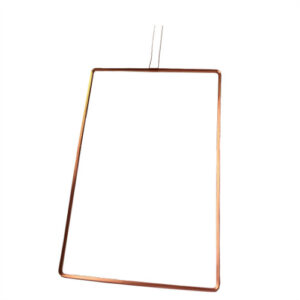Hollow inductor coils are commonly used components in household appliances, instruments and meters, and other electronic products. They operate based on the principle of electromagnetic induction. Their electrical characteristics are opposite to that of capacitors—they “pass low frequencies and impede high frequencies.” High-frequency signals encounter significant resistance when passing through an inductor coil, making it difficult for them to pass through, while the resistance presented to low-frequency signals is relatively small, allowing low-frequency signals to pass through more easily. Hollow inductor coils have almost zero resistance to direct current.

The main applications of hollow inductor coils include induction acceptance, magnetic heads, high-current coils, low-voltage appliances, industrial control appliances, focusing, magnetic cards, automotive electronics, surface mount technology (SMT) assembly, electronic navigators, power regulators, mobile phones, wireless transceivers, resonators, and filters used in various electronic products or electronic accessories. It is evident that hollow inductor coils have a wide range of applications.
Inductance is the ratio of the varying magnetic flux in and around a conductor to the current that produces that magnetic flux when an alternating current passes through the conductor.
When a DC current flows through an inductor, it only has a fixed magnetic field around it that does not change with time. However, when an AC current passes through a coil, the magnetic field around the hollow inductor coil changes with time. According to Faraday’s law of electromagnetic induction, the changing magnetic field induces an electromotive force at both ends of the coil, equivalent to a “new power source.” When a closed circuit is formed, this induced electromotive force generates an induced current.

Hollow inductor coils can be classified based on their basic composition, conductive core, and electrical insulation layer. Generally, they are classified according to the insulation material and manufacturing methods of their electrical insulation layer, including enameled wire, wrapped wire, enameled wire with inorganic insulation, etc. The process involves applying the corresponding enamel onto the conductor, followed by solvent evaporation, film curing, and cooling. Enameled wires can be further classified into polyester enameled wire, polyester imide enameled wire, polyamide imide enameled wire, polyimide enameled wire, polyester imide/polyamide imide enameled wire, corona-resistant enameled wire, oil varnish, alkyd varnish, polyurethane enameled wire, etc. Sometimes, they are classified based on special purposes, such as self-adhesive enameled wire, refrigerant-resistant enameled wire, etc.